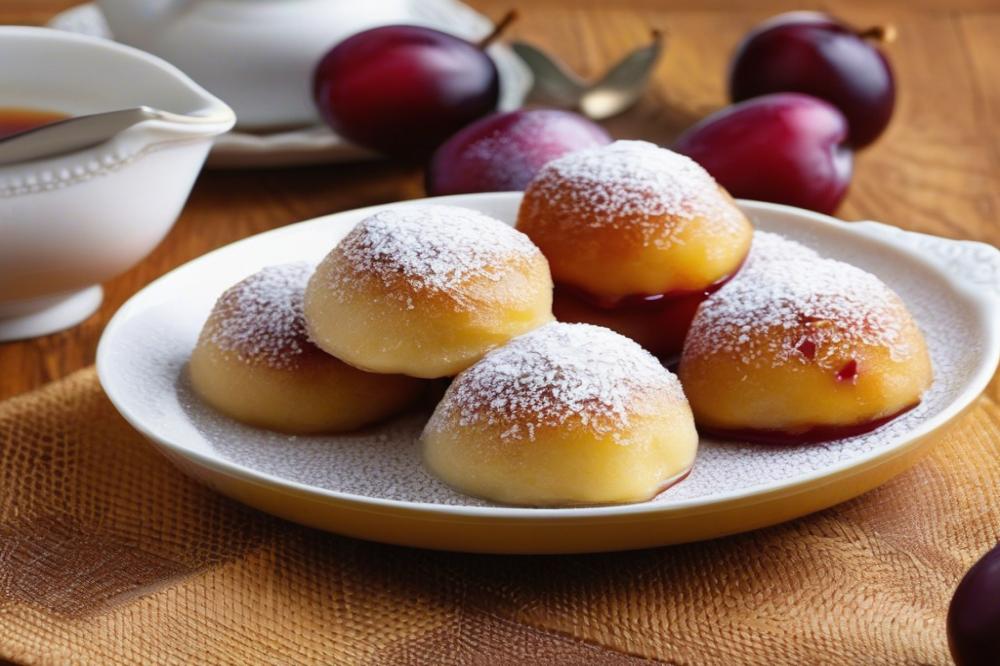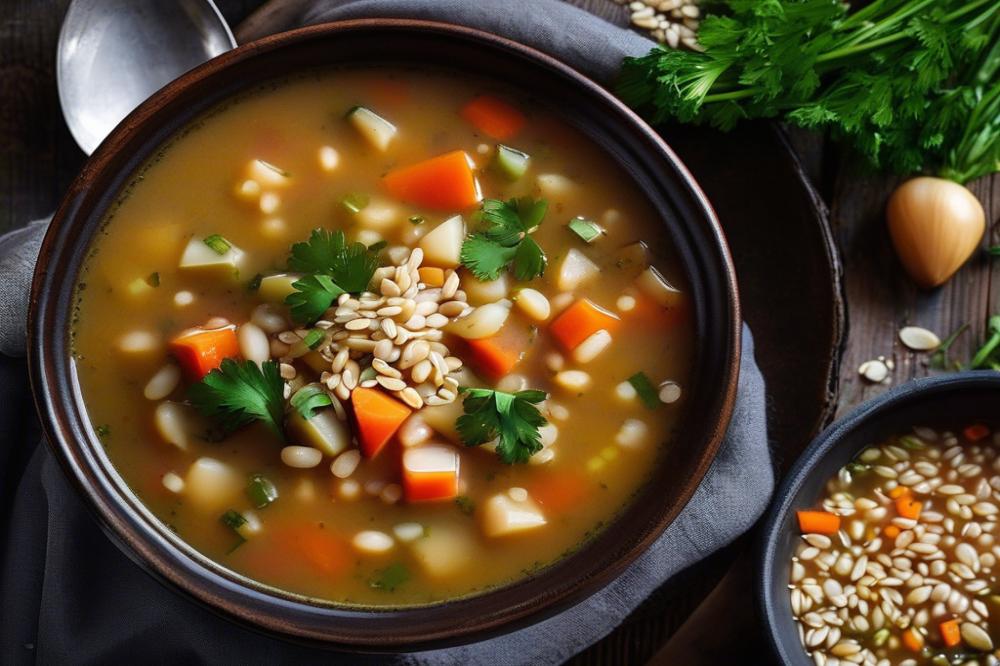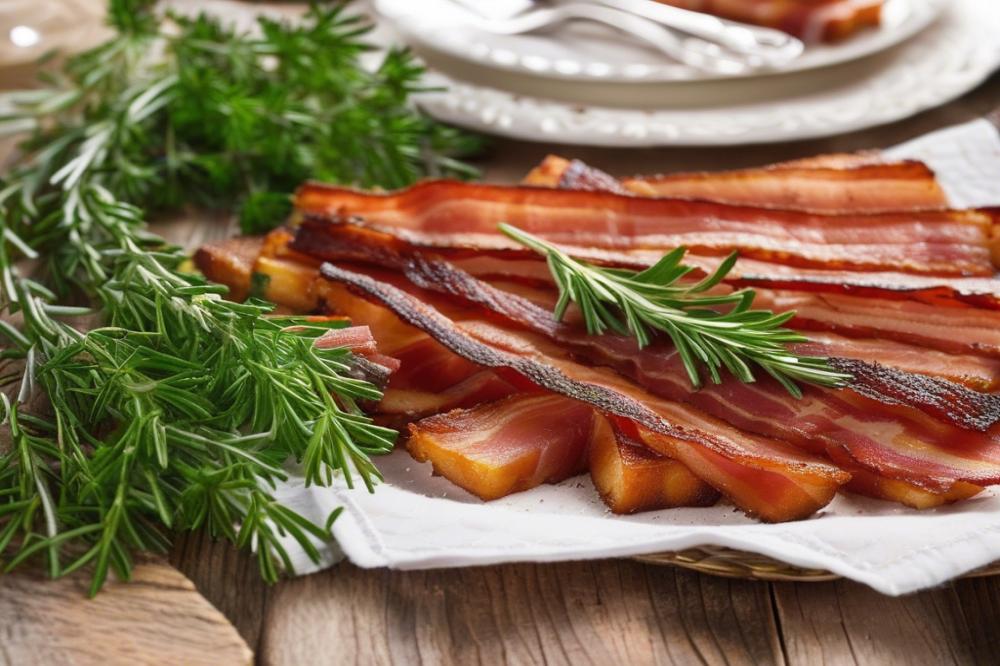Introduction
Polish cuisine is rich and diverse, showcasing a variety of flavors and textures. This cultural tapestry draws from centuries of history, blending influences from neighboring countries and regional traditions. Meals often reflect the changing seasons, featuring fresh ingredients for every occasion.
Among the gems of this culinary landscape are sweet dumplings, particularly the beloved Knedle ze Śliwkami. These Polish plum dumplings are a classic dessert that captures the essence of home cooking. They celebrate the delightful plums found in abundant harvests, transforming them into a comforting dish that evokes warmth and cherished memories.
Homemade dumplings hold a significant place in Eastern European food culture. They are more than just a meal; they embody family traditions and gatherings. Preparing these fruit dumplings at home often becomes a rite of passage for families, with each generation passing down their unique dumpling recipe. Potato dough wraps around juicy plums, creating a dish that delights the senses. Such recipes not only satisfy hunger but also inspire connection and nostalgia among those who enjoy them.
Polish plum dumplings
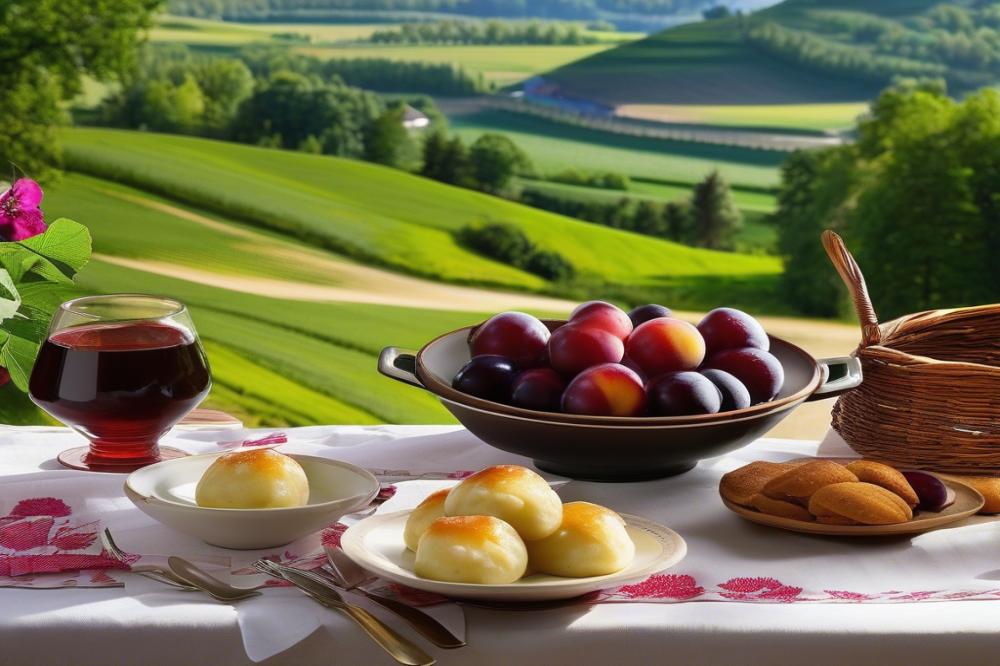
Definition and Significance in Polish cuisine
Polish plum dumplings, known locally as knedle ze śliwkami, hold a special place in the heart of Polish cuisine. They are more than just a dish; they represent comfort and home for many families. Often served as a dessert, these sweet dumplings showcase the importance of fruit in Eastern European cooking. Homemade dumplings are common in Polish kitchens, illustrating a connection to tradition and family gatherings.
Description of the Dish and Its Traditional Variations
Dumplings are made using potato dough, which gives them a soft and pleasing texture. Plums, usually fresh or cooked, serve as the star filling. The process involves wrapping the luscious fruit in the dough, shaping them into delightful pillows. Some variations include adding sugar to the plums or sprinkling them with cinnamon for extra flavor. Another popular approach is to serve them with a sprinkle of sugar or a creamy sauce. In different regions of Poland, similar recipes exist that use various fruits, showcasing the versatility of this classic dish.
Comparison with Other Fruit Dumplings
Comparing knedle ze śliwkami with other fruit dumplings reveals intriguing similarities and differences. Many cultures across Eastern Europe create their versions using different fruits, such as cherries or blueberries. These fruit dumplings often feature similar dough techniques but vary in taste and texture based on the fruit selected. While dumplings filled with plums offer a sweet, tart flavor, others might taste sweeter or have a more pronounced fruit flavor. Each recipe tells its own story, reflecting the local ingredients and traditions of the region.
Ingredients and Cooking Instructions
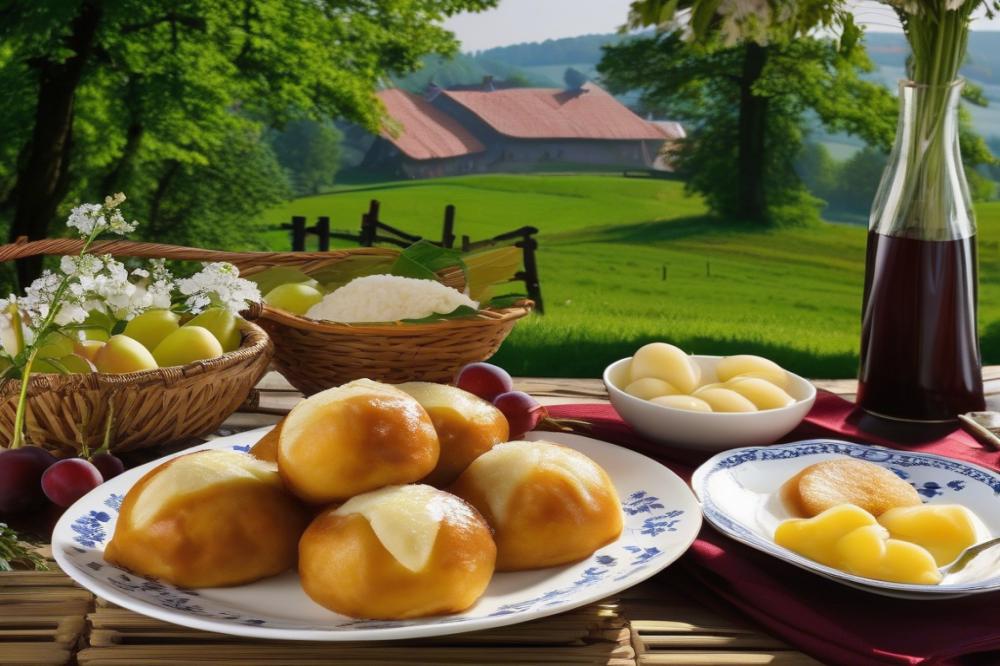
List of Ingredients with Quantities
- 2 cups potato (mashed)
- 1 cup all-purpose flour
- 1 large egg
- 12 ripe plums (pitted)
- 1–2 tablespoons sugar (for plums)
- 1/4 teaspoon salt
- 1/4 cup butter (for serving)
- Optional: cinnamon or sugar for topping
Step-by-Step Cooking Instructions
Begin with preparing the potato dough. Start by boiling the potatoes until tender. Once cooked, mash them thoroughly. Allow the potatoes to cool before mixing. Combine the mashed potato with flour, egg, and salt. Knead this mixture until it forms a smooth dough. Ensure there are no lumps remaining.
Next, prepare the plums. Wash them gently and remove the pits. Then, sprinkle one to two tablespoons of sugar over the plums, allowing them to become sweet and juicy. This step enhances their flavor and helps balance the dough in our dumpling recipe.
Now it’s time for shaping the dumplings. Take a portion of the potato dough and flatten it in your hand. Place a pitted plum in the center and wrap the dough around it. Seal the edges carefully to prevent any leakage during cooking. Each dumpling should be a smooth ball.
The cooking process is straightforward. Bring a large pot of salted water to a gentle boil. Carefully drop the dumplings into the water, ensuring they don’t stick together. Boil them until they float to the surface. This usually takes about 5-7 minutes. Once they’re done, use a slotted spoon to remove them.
Serving suggestions can elevate your dish. Melt some butter in a pan and toss the cooked dumplings in it for rich flavor. You may add a sprinkle of sugar or a dash of cinnamon for a delightful twist. These sweet dumplings can be a perfect dessert or even a satisfying main course in Polish cuisine. Enjoy your creation with friends and family while exploring the delightful world of Eastern European food.
Nutritional Information
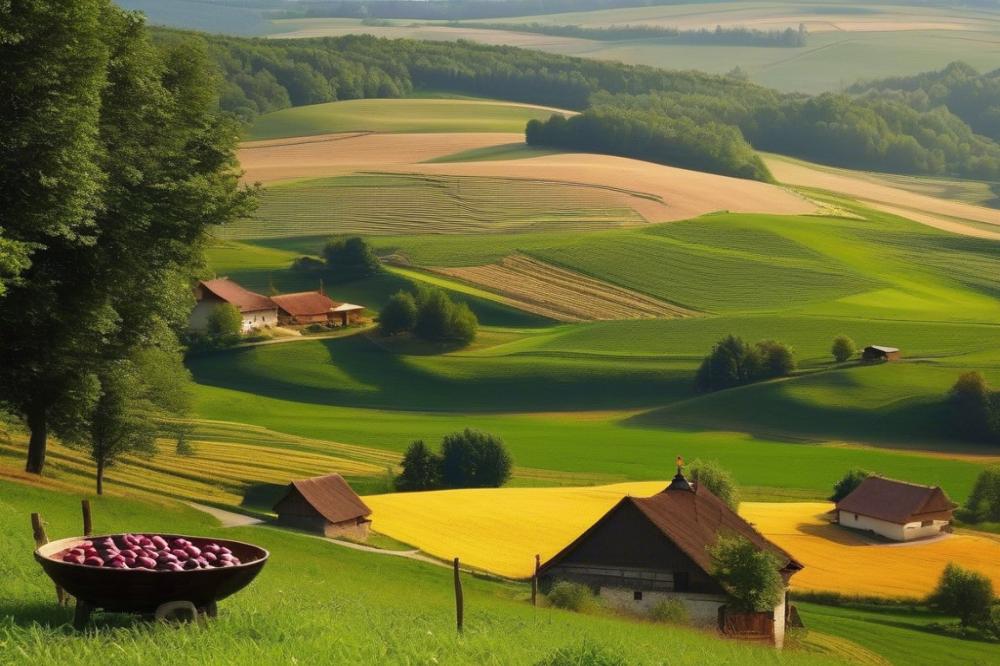
The dumpling recipe for knedle ze śliwkami consists of several key ingredients that each contribute to their overall nutritional profile. The primary component, potato dough, is rich in carbohydrates, providing energy essential for daily activities. Plums, being the star of this dish, not only add flavor but also a variety of vitamins and minerals.
When analyzing the calories in homemade dumplings, a serving of four dumplings can contain around 300-400 calories, depending on specific portions and ingredients. Carbohydrates from the potato dough can make up approximately 55-60 grams per serving. There are also small amounts of protein and fat, generally around 6-8 grams and 2-4 grams, respectively, making these sweet dumplings a balanced option for a dessert.
Overview of Nutrients
Plums offer numerous health benefits. Packed with vitamin C, they help boost the immune system and promote healthier skin. Additionally, these fruits are a good source of vitamin K, which is important for bone health. The dietary fiber found in plums aids in digestion, making them beneficial for gut health.
Furthermore, potato dough is not only a great source of carbs but also contains some important minerals. Potatoes provide potassium, which helps manage blood pressure levels. With a combination of ingredients, this Eastern European food provides a wholesome treat that is both satisfying and nutritious.
Health Benefits of Ingredients Used
There are many advantages to including these ingredients in your diet. Sweet dumplings made with plums may offer antioxidants, helping to fight free radicals in the body. Traditional recipes often highlight the importance of wholesome, natural ingredients, making these dumplings a guilt-free dessert choice.
Including more fruits in meals can encourage healthier eating habits. As such, the flavor and richness of the plums not only elevate the taste but enhance the nutritional profile. Making the recipe from scratch also allows individuals to control the sugar content and add their own healthy twists.
Cultural Significance
Dumplings have long held a crucial place in Polish traditions and celebrations. They are often served during festive occasions, particularly during family gatherings. Polish cuisine thrives on comfort foods, and sweet dumplings made with plums are no exception. These delicious morsels often appear on holiday tables, symbolizing warmth and togetherness.
The process of making homemade dumplings frequently becomes a shared family activity. Generations often gather in the kitchen, where laughter and stories mix with the scent of boiling potatoes and sweet fruit. Young and old come together, learning from each other while preparing the dish. Hand-rolling the potato dough, inserting the plums, and sealing each dumpling can turn into a joyful event, full of meaningful interactions.
This connection extends beyond Poland. Many Eastern European food traditions embrace similar fruit dumplings, showcasing local ingredients and cultural variations. While Polish plum dumplings feature plums, Russian pierogi and Ukrainian varenyky may include different fillings like cherries or berries. Each region presents its own twist, yet the spirit of celebrating family and heritage remains constant.
Variations and Tips
This dumpling recipe offers a canvas for creativity. While plums are traditional, many other fruits work just as well. Cherries, apricots, or blueberries can bring a different flavor to your sweet dumplings. For a twist, consider using sweet cheeses like farmer’s cheese or ricotta. Stuffing the dumplings with chocolate can also turn them into an indulgent dessert.
Moving towards savory versions can add variety to your table. Some people fill their dumplings with sautéed mushrooms, cooked spinach, or even cheese to create a hearty meal. Pairing these savory homemade dumplings with a creamy sauce or a light broth can enhance their flavor profile. Various spices can also be incorporated for a touch of warmth.
Perfecting the dough is an essential part of preparing these delightful morsels. Start with a base of potato dough, as potato adds a lovely texture. The dough should be smooth and pliable. Kneading gently helps achieve the right consistency. Keep in mind that overworking the dough can make it tough, so handle it with care.
Cooking technique is equally important. Boiling the dumplings is the most common method. Make sure the water is at a rolling boil before adding your fruit dumplings. Cooking them just until they float is key to keeping them tender. A quick sauté in butter after boiling can also enhance their flavor.
Serving ideas stretch beyond the usual butter and sugar. Some enjoy them with a dollop of sour cream, adding a tangy contrast. A sprinkle of crushed nuts can provide texture alongside the sauce. Consider also serving them with a light drizzle of honey or a fruit compote for an extra touch of sweetness. The beautiful presentation can be a feast for the eyes as well as the palate.
Final Thoughts
Polish plum dumplings hold a cherished place in the hearts of many, reflecting the rich tapestry of Polish cuisine. They are more than just a dish; they represent tradition, family gatherings, and the joy of sharing food. This classic dessert, with its sweet plums wrapped in tender dough, tells a story of heritage passed down through generations.
Making this dumpling recipe can be a rewarding experience. Trying your hand at preparing them can connect you with the culture, bringing a bit of Poland into your kitchen. The aroma of ripe plums and fresh dough wafting through your home will be hard to resist.
As you explore this delightful dish, consider venturing into other traditional recipes from Poland and beyond. Every plate offers a glimpse into the history and customs of a region, making mealtime an adventure. From pierogi to bigos, Eastern European cuisine is full of flavors waiting to be discovered. Give it a shot! You just might surprise yourself with what you can create.

